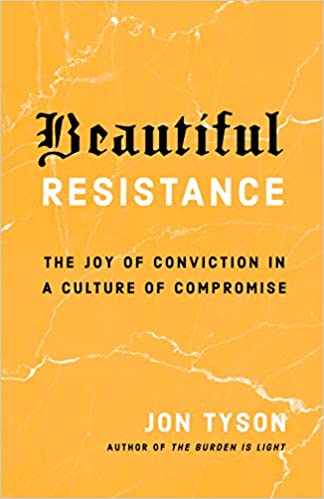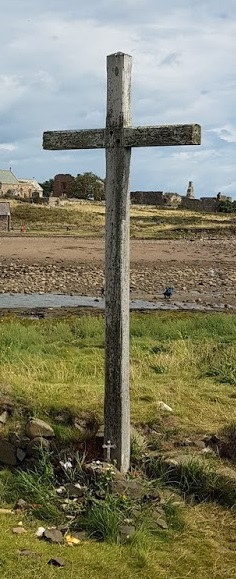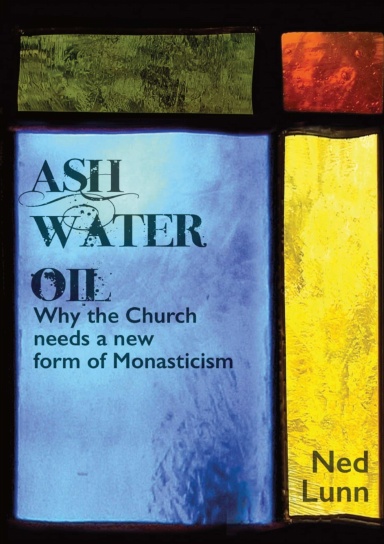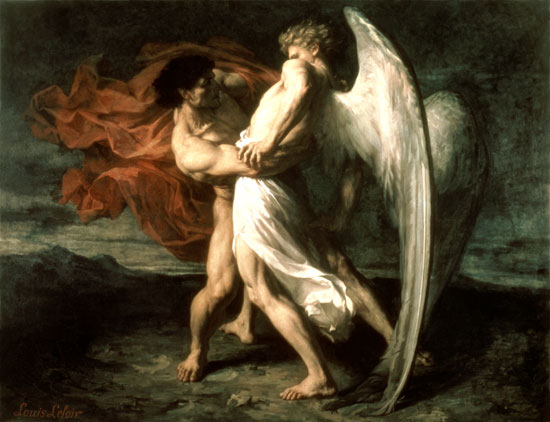 Like many of us, I’ve been pondering things in this current pandemic season. I’m finding it helpful to see some parallels between these times and the effect of Jesus’ teaching, especially his parables.
Like many of us, I’ve been pondering things in this current pandemic season. I’m finding it helpful to see some parallels between these times and the effect of Jesus’ teaching, especially his parables.
Allow me to explain myself: Jesus, famously, made use of parables. Rather than “answering plainly” he would tell a short story. We know many of them by name: The Parable of The Prodigal Son, The Lost Sheep, The Good Samaritan, etc. They have become well-known to us. So well-known, in fact, that we have become immune to their force.
Parables are meant to impact.
Here’s an example from someone other than Jesus: In 2 Samuel 12, the prophet Nathan confronts King David about his corruption. He could have spoken plainly, but I doubt he would have been heard. Instead, he tells a parable, the story of a rich man who oppresses his poor neighbour. David is drawn into the story until he is confronted: “You are the man!”
Nathan’s parable brings David to a crisis. He cannot stay where he is. The status quo is not possible anymore. He must respond, one way or another. He can either respond with hardened heart, or he can fall into faith. In this case David softens his heart and responds with contrition and repentance. The parable has its impact.
When Jesus speaks in parables he brings his hearers to a similar crisis. They cannot remain unmoved. They will either harden themselves against his word, or they will fall into faith.
In Matthew 13:1-9, Jesus shares the famous Parable of the Sower. It’s a beautiful metaphor involving a farmer sowing seed indiscriminately; it lands on shallow soil, weedy soil, hardened soil, and good soil. He later explains the metaphor; the seed is the word of God which can come to nothing in the poor soil of the pleasures and pressures of life, or bear much fruit in the good soil of those who “hear and retain it.”
This story prompts his disciples to ask, “Why do you speak to the people in parables?”. Jesus responds by quoting the prophet Isaiah:
Then I heard the voice of the Lord saying, “Whom shall I send? And who will go for us?”
And I said, “Here am I. Send me!”
He said, “Go and tell this people:
“‘Be ever hearing, but never understanding;
be ever seeing, but never perceiving.’
Make the heart of this people calloused;
make their ears dull
and close their eyes.
Otherwise they might see with their eyes,
hear with their ears,
understand with their hearts,
and turn and be healed.”
Isaiah 6:9-10
Isaiah spoke to God’s people at a point when they were wallowing in complacency after a period of prosperity, even as their world was threatened by a looming invader. They had lost their way. They had forgotten who they were. They were God’s people but they had become self-assured, oppressive, and unrighteous, just like the other nations. They didn’t just need teaching, they needed impacting. Like Nathan with David, they needed a real crisis. So Isaiah was to speak to them in a way that only faith would grasp. Without that soft heart, they would be “hearing but never understanding”, confirmed in their hardness.
Jesus speaks in parables to do the same for his generation.
Consider the Parable of the Sower. For those with “ears to hear” with a heart of faith, it is wonderful truth. God’s life-giving word is scattered indiscriminately; it’s not just for the strong or wise or holy. God has spoken to everyone, in all places and all circumstances. Heard with a heart of faith, this story generates a yearning to be good soil. It impacts faith and leads to more faith.
But for those who can’t hear it that way, it will have the opposite effect. For those who hold the word of God as something reserved for the upright and pure, a tool for those who have been schooled in the right Pharisaical school, this parable is a confrontation, even an offense. The reponse of the Pharisees to Jesus was often condescension, derision, or anger. They heard but didn’t understand. The parable reveals their lack of faith.
When it comes to faith (or the lack of it) within God’s people, parables have a prophetic amplifying effect. “Whoever has will be given more, and they will have an abundance. Whoever does not have, even what they have will be taken from them.” (Matthew 13:12)
This then, is my reflection: This coronavirus season is working like a parable to us, the church. It is having a similar prophetic amplifying effect. It is bringing us to a crisis. It’s not just a crisis of medical and economic management (although that is real). It’s not just a crisis of bereavement and trauma (although that is very very real). It is bringing us to a crisis of faith.
In the westernised world we have chuffed along in our churches in a context of comfort and prosperity. It’s a bit like Isaiah’s day. We have built a religious industry. We have made our appeals to the masses. We have gotten good at offering something decent on a Sunday, and mechanisms attuned to felt needs throughout the week. But that edifice has been shaken; we cannot even meet together at the moment.
Even as we do our best (and there is much good) in the netflix world of livestreams and zoom, we recognise that the former status quo is gone. If we can put 90% of our “product” online, just what were we doing anyway? The question is raised. The moment is impacting us.
The impact is also similar to Isaiah’s day; it is raising the question of identity. Whose are we? The difference is literally a matter of faith: We are either God’s people, and confirmed in that, or we are self-made with a borrowed Christian aesthetic, and that is what will emerge. It’s a parabolic moment.
We can imagine the two different responses:
We could do it without God. We can rebuild the edifice. We can market the spiritual experience. We can even do a decent job of being a neighbourly community on a par with any decent Mutual Aid Group. We can find our activism of choice that wants to put the world back together again a certain way, and get on board. We may even take some of our current moment with us: the comfort of doing church in our pyjamas is not nothing!
It’s not necessarily malicious or morally bad, but in this direction it can all be done in our own strength. Like Isaiah’s people seeking help from Egypt… like religious leaders dismissing the up-start from Nazareth and turning back to their traditions… we will not hear the call to faith in the current moment. Just put it back the way it was, or the way we now want it to be.
In this direction, the trust is not in God, it’s all about us. Extend it out and we imagine not just church, but divinity itself in the form that we want it, purged of all that we find disagreeable. This can manifest at any point on the church spectrum: From woke do-goodery, to blinkered protestations, to marketing tactics, to immovable emptied traditions, it can be sweet, or acidic, stimulating, or soporific. But it has this in common: My world, My terms. A Christian aesthetic, but God not needed, not really.
I can see our current parabolic moment amplifying this faith-less response. Yes, I see it around me, but mostly I mean this with respect to myself. I want to do. I want to seize the moment. I want to plan the future. This is my time! Let us choose the future that most aligns with our sense of self-security and call that “faithful”!
The real difference isn’t about choosing one self-made future as more virtuous than another self-made future. If we look at it like that, we are hearing but not understanding.
Rather, the other effect of this moment is to undo us, and bring us to God. That is the heart of faith.
We are also seeing this in this moment. People are being undone. They are wondering, seeking, yearning, thirsting for something beyond themselves. Perhaps its because we’re facing mortality honestly again. Perhaps our pretenses of safety have gone and our simple smallness has re-emerged as real. Perhaps life once looked like a rut and rail in a predetermined direction, but now there are possibliities. Whatever it is, this moment is undoing us. It is at this moment in the parable that we look up to see the face of Jesus speaking.
Look at the response to Jesus’ teaching. Faith often looks like bewilderment. It’s the Pharisees that go off with self-assured certaintity of how they want things to be, but the path of faith looks more like confusion. Eyes have been opened, now blinking in the sun, exclaiming both “Lord, at last!” and “Lord, I don’t know what to do!” The Bible describes this moment in many ways – from amazement to being “cut to the heart” to declarations of bewailing truth “I am ruined.” “Go away from me Lord, I am a sinful man.”, and “My Lord, and my God.”
The faith-filled response is not so much as a position or determined direction, as a posture.
It is a posture of surrender. It is cross-shaped, a laying down of everything. It can feel like a refining death. Let it be that it is no longer we that live, but Christ that lives within us! We repent. We believe.
It is a posture of response. Jesus says, “Come, follow me!”, and we leave our nets and follow him. We are stripped of our security, and led into the unknown. But it’s OK, we are led by Jesus. He is of greatest value.
It’s a posture that bows to grace in the suffering. Of weeping when needed, and laughing at other times. Of praying “Lord, your will be done!”
It’s a posture that waits for him, as the edifices crumble, and the collapse of more substantial things is more than possible. And it ponders firstly, not “What can we make of this?” but “What will our Lord now do?” It is aware of needs, and fears, and griefs, and opportunities, and possibilities; but it doesn’t just up and thrust forward. We only do what we see the Father doing. We wait.
Above all, it is a posture of worship. We remember who we are, and we are His. Our distinctive is our worship: before anything (even before we all manner of good things, like a loving community), we are Jesus’ people. Everything else comes from that, or we lose it all, even our love in the end. So we sit at his feet. We stare at his face. We rest our head against his breast. Our love is in him, bearing his name.
Across the spectrum, it has this in common: Lord, your world. Lord, your terms. Lead us, in this moment, lead us. It’s all about you, Jesus.
This season is like a parable, it is impacting us with a crisis of faith. The status quo is not possible. And there are two responses for the churches: to harden ourselves in self-assurance and build our future, or be softened in faith and be his right now.
Photo credit: https://www.pxfuel.com/en/free-photo-ooqmj marked as royalty-free and available for re-use.
 I’m being more introspective than normal, but strangely, I feel I need to mark the day.
I’m being more introspective than normal, but strangely, I feel I need to mark the day.









